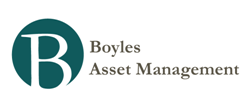Hoisington Q1 Letter
If the objectives of Quantitative Easing 2 (QE2) were to: a) raise interest rates; b) slow economic growth; c) encourage speculation, and d) eviscerate the standard of living of the average American family, then it has been enormously successful. Clearly, with the benefit of 20/20 hindsight these results represent the Federal Reserve’s impact on the U.S. economy, regardless of their claims to the contrary.
…
Why the Fed would believe the economy could benefit from the addition of $600 billion (the QE2 target) in reserves to a banking system that already had over $1.1 trillion in unused, idle, but potentially inflationary reserves on hand nearly defies understanding. The action, however, was not lost on holders of the $8 trillion Treasury securities outstanding.
This increase in the level of interest rates occurred, not only during QE2, but in QE1 as well (Table 1). Thus the Federal Reserve engineered a rate increase, and the injection of excess reserves had several other deleterious ramifications for the U.S. economy.
…..
This QE2 episode serves as a reminder that the nature of the problems facing the economy are very complex, including a variety of deep seated structural problems such as excessive indebtedness, and an unstable and debilitating fiscal policy. The Fed’s freedom to act does not eliminate the need for wise decisions. Untested monetary solutions for non-monetary problems should not be attempted. Sympathy for high unemployment is not sufficient when Fed actions produce undesired feedback loops that increase misery. While the Fed has the dual mandate to keep inflation and unemployment low, the path to achieving those dual objectives is to base decisions on the inflationary implications of their policy. If the Fed’s goal is to limit unemployment, the path to success is to ensure low, not accelerating inflation, a lesson we have just learned once again.
- Hussman Weekly Market Comment: Topping Patterns And The Proper Cause For Optimism
Link to: Topping Patterns and the Proper Cause for OptimismNotes to the FOMC The following are a few observations regarding Dr. Yellen’s testimony to Congress. The objective is to broaden the discourse with alternative views and evidence, not to disparage...
- Hussman Weekly Market Comment: Superstition Ain't The Way
“The problem with QE is that it works in practice but it doesn’t work in theory.” - Ben Bernanke, Outgoing Federal Reserve Chairman, January 16, 2014 "When you believe in things that you don't understand, then you suffer. Superstition...
- Hoisington Q1 2013 Letter
“The Federal Reserve is printing money”. No statement could be less truthful. The Federal Reserve (Fed) is not, and has not been, “printing money” as defined as an acceleration in M2 or money supply. Just check the facts. For the first quarter...
- Hoisington Q4 Letter
Factoring in a 4% Q4 growth rate, the U.S. economy expanded by 3% in real terms from the 4th quarter of 2009 through the 4th quarter of 2010. Despite this rise in GDP, the unemployment rate remained stubbornly high at 9.6% in the last quarter of 2010,...
- Hussman Weekly Market Comment: Sequential Signals
On the subject of inflation, I should emphasize that while I expect inflation pressures to be contained for several years, the impact of massive deficit spending should not be disregarded simply because Japan, with an enormously high savings rate, was...

